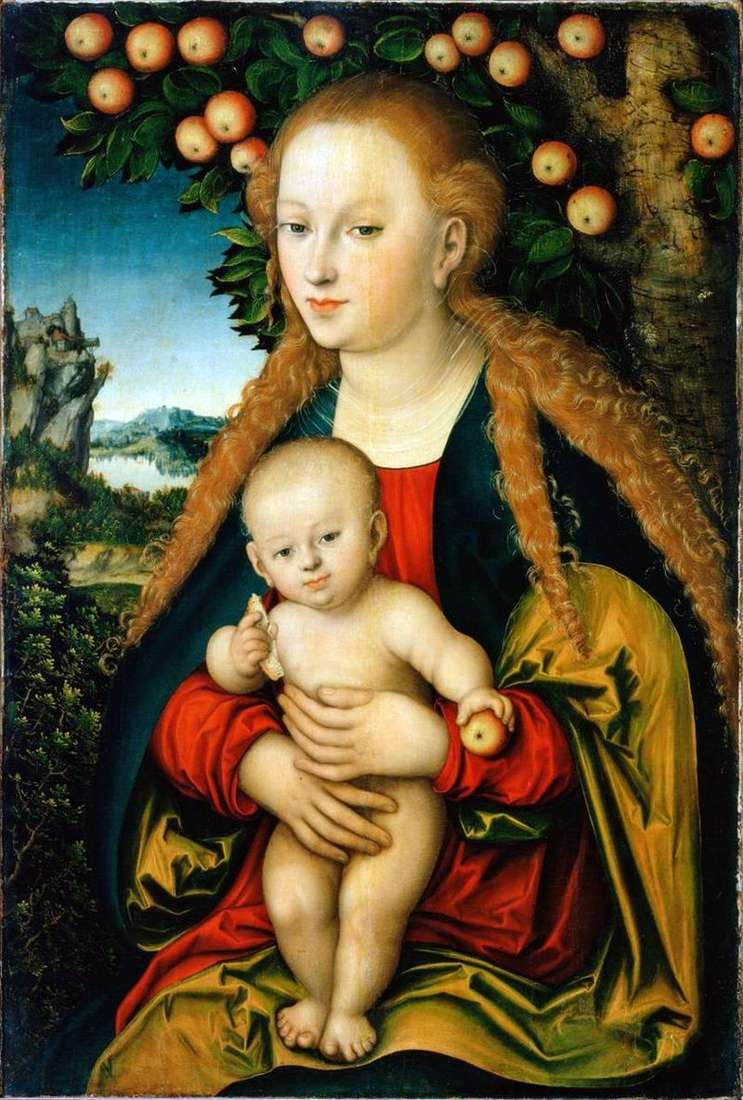
The painting by Florentine artist Alessandro Allori “Madonna and Child”. The size of the painting is 131 x 117 cm, canvas, oil. The painting has another name “Allegory of the Christian faith.” The painting was acquired in the collection of the Hermitage from the collection of the Spanish ambassador to Russia Pais de la Codena in 1834. The word Madonna has long been used in Italy mainly as the name of the Blessed Virgin, the Mother of God in prayer to her, and also serves to designate her icons and statues.
In this second, artistic meaning, the word Madonna passed from the Italian language and into other Western European languages. The most ancient images of the Madonna, dating back to the 2nd and 3rd centuries, are known from the wall paintings of the Roman first Christian catacombs, which represents the Madonna or in the form of an orante – a woman with a veil on her head, with arms spread outward and uplifted, or with a baby Christ in her womb, or the form of a young mother sitting and holding a baby on her lap.
With the awakening of attention to nature and to the monuments of classical antiquity, the images of the Madonna are more and more liberated from Byzantine influence and, becoming one of the most favorite tasks of artistic creativity in Italy, are gaining more and more variety, increasingly reflecting the individuality of their performers.
And finally, at the blossoming of the Renaissance, the images of the Madonna reach a high perfection: Madonna is in the pictures of the painters the ideal of feminine beauty and grace, virginity, humility, prayerful tenderness, parental tenderness – a modest mother, completely immersed in the care of her baby Son, then a young virgin, embraced by a sacred ecstasy, then a majestic but gentle queen, mercifully looking at those who resort to her intercession.
 Eleonora di Garcia dei Medici by Alessandro Allori
Eleonora di Garcia dei Medici by Alessandro Allori Madonna and Child under the Apple Tree by Lucas Cranach
Madonna and Child under the Apple Tree by Lucas Cranach Portrait of a Florentine lady by Alessandro Allori
Portrait of a Florentine lady by Alessandro Allori Portrait of a Lady by Alessandro Allori
Portrait of a Lady by Alessandro Allori Portrait of a young man by Alessandro Allori
Portrait of a young man by Alessandro Allori Isabella Medici with a dog by Alessandro Allori
Isabella Medici with a dog by Alessandro Allori Two angels at the body of Christ by Alessandro Allori
Two angels at the body of Christ by Alessandro Allori Allegory of human life by Alessandro Allori
Allegory of human life by Alessandro Allori